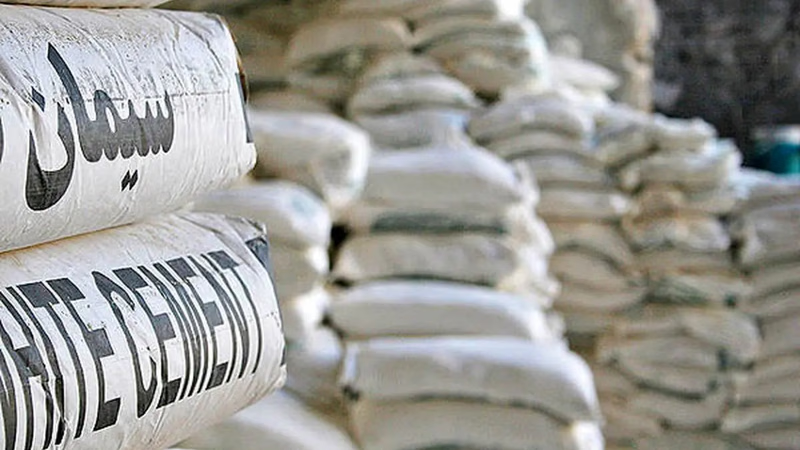
Different types of cement for diverse construction needs.
There are several types of cement, each with its own specific characteristics and applications. Ordinary Portland Cement (OPC) is the most widely used cement for general construction purposes. It is suitable for various applications, including residential buildings, commercial structures, bridges, pavements, and most common concrete works. Portland Pozzolana Cement (PPC) PPC is known for its enhanced workability and durability. It is commonly used in hydraulic structures, marine environments, sewage works, and mass concrete constructions. It is also suitable for plastering, masonry, and finishing works.
Different construction projects have varying strength and durability requirements. Some structures need higher strength and durability to withstand heavy loads, while others may have specific environmental conditions that require resistance to chemicals, sulfates, or other aggressive elements. Different types of cement are formulated to meet these specific strength and durability requirements. Workability refers to the ease of handling and placing the concrete mix. It is an important consideration during construction. Different types of cement can provide different workability characteristics, allowing contractors to choose the one that suits their construction methods and timeframes. Similarly, setting time requirements can vary depending on the project. Rapid hardening cement, for example, can shorten the setting time and expedite construction schedules.
Different types of cement will be used in various forms such as concrete, building facades, wall and floor coverings, construction of columns and foundations and also to increase the safety and strength of the structure. Today, different types of construction cements with different physical, chemical and functional characteristics are available in the consumer markets. Different types of building cement in combination with water and the surrounding air will be fully integrated and will create a structure impermeable to water, heat and moisture.
Sulphate resistant cement is resistant to sulfate attacks from soil or water. It is used in construction projects where the concrete will be exposed to sulfate-rich environments, such as underground structures, basements, and marine constructions. Blended cements are produced by blending OPC with supplementary cementitious materials (SCMs) such as fly ash, slag, or silica fume. Different types of blended cements, such as Portland slag cement (PSC) and Portland fly ash cement (PFAC), offer improved workability, durability, and sustainability. They are used in various applications similar to OPC, depending on the specific blend.
- Portland cement type 1
is the same as ordinary cement which is available in white or gray. The white one is used in making concrete counterparts because in spite of its high price it has precise color consistency. - Portland cement type 2
is also known as modified cement. Modified cement can be used in mass and hot weather concreting. In fact, this type is the most widely used type of cement, because it has many applications in building foundation, walling (brick, clay, block, etc.), tiling and many others. This type of cement is also used in the construction of cement blocks, curb and various types of utility pole. - Portland cement type 3
is referred to under other headings such as regulated-set cement or hardening cement. It is more useful when the exploitation work has to be done earlier.
This cement is cured quickly in cold weather conditions and the only thing that should be considered while using it is the use of antifreeze. - Portland cement type 4
is known as slow setting cement. This cement is used in high temperature over 40 degrees, in lower speed concreting and in layers. - Portland cement type 5
is also known as anti-sulfate cement. Therefore, Portland cement type 5 is used when the environment of the concrete structure is exposed to severe sulfation.
Grout cement is composed of water, cement, sand and other additives. Grouting is used to fill empty spaces and large cracks as well as to prevent cement from being flaky. Grouts are in the form of powder that after mixing with water, they are used as a fluid mortar. Buffer grout is the most widely used type of grout. White Portland cement is made like ordinary portland cement, except that its raw materials do not contain iron oxide, so clay should not be used in making it, but in this case, the cost will increase, so the same raw materials in addition to potassium chloride or calcium chloride are used, which is combined with iron oxide in a cement kiln to give iron chloride, which is a gas that evaporates and then the cement color turns white. Iron oxide should not consist of more than 0.02% of white cement total weight.
White cement is primarily used for architectural purposes and decorative finishes. It is commonly used in precast panels, terrazzo flooring, decorative works, and for creating colored concrete. Rapid hardening cement is designed to achieve early strength development. It is used in projects that require quick setting and early load-bearing capabilities, such as road repairs, precast elements, and cold weather concreting. Low heat cement generates less heat during hydration, reducing the risk of thermal cracking. It is suitable for massive concrete structures, such as dams, large foundations, and massive retaining walls, where heat dissipation is crucial.
Environmental factors, such as temperature, humidity, and exposure to aggressive substances, can influence the performance of concrete. Some types of cement are designed to perform better in specific conditions. For instance, low heat cement reduces the heat generated during hydration, making it suitable for massive concrete structures that are prone to thermal cracking. Sulphate resistant cement is suitable for environments where the concrete may come into contact with sulfate-rich soils or water, which can cause deterioration. With growing awareness of sustainability, there is an emphasis on reducing the environmental impact of construction materials. Blended cements, which incorporate supplementary cementitious materials such as fly ash or slag, offer improved sustainability by utilizing industrial by-products and reducing the carbon footprint associated with cement production.
-
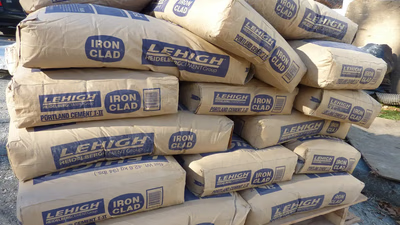
The cement industry is undergoing significant transformation aimed at reducing environmental impact and enhancing sustainability. Key initiatives include the development of alternative cementitious materials, such as geopolymers and calcium sulfoaluminate cements, which produce lower carbon emissions than traditional Portland cement. The sector is increasingly focusing on energy efficiency, cleaner production technologies, and the use of waste materials as alternative raw materials or fuels. This trend not only aids in waste reduction but also promotes resource conservation. As urbanization accelerates, particularly in emerging economies, the demand for cement remains strong due to ongoing infrastructure development needs. The industry is also adapting to prefabrication and modular construction methods, which enhance efficiency and reduce material waste. Furthermore, advancements in technology are expected to revolutionize cement manufacturing through innovations like carbon capture and utilization/storage (CCU/CCS) and novel kiln designs. Digitalization and automation are being embraced to optimize production processes, improve quality control, and enhance operational efficiency through data analytics and machine learning. These changes reflect a broader shift towards sustainability and efficiency within the industry as it prepares for future challenges related to population growth, environmental concerns, and technological advancements.
-
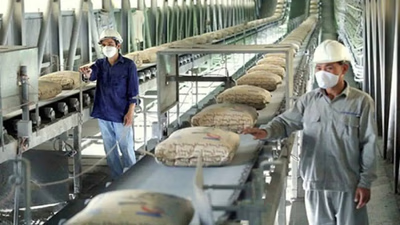
The cement industry is set to undergo significant transformations focused on sustainability and efficiency. Key trends include the adoption of alternative cementitious materials, such as fly ash and slag, which can reduce carbon emissions and promote waste utilization. Innovations in roller mill design will enhance grinding performance while minimizing energy consumption. The integration of digital technologies, including data analytics and artificial intelligence, will optimize production processes and improve product quality. Automation will play a crucial role, potentially reducing the need for manual labor and shifting workforce requirements towards information engineers and technical specialists. Additionally, advancements in preheating technologies and heat recovery systems will further enhance energy efficiency in clinker production. The industry is also expected to embrace circular economy principles by utilizing industrial by-products as alternative raw materials. As construction practices evolve with prefabrication and 3D printing, cement manufacturers must adapt their products accordingly. Overall, these changes aim to create a more sustainable, efficient, and technologically advanced cement industry.
-
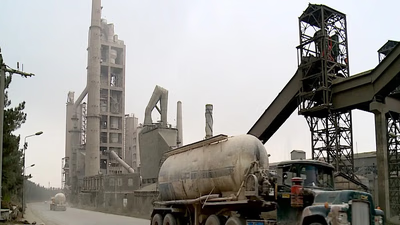
Proper cement storage is crucial for maintaining its quality and integrity. Cement must be kept in a dry, well-ventilated environment to prevent moisture absorption, which can lead to clumping and reduced performance. It is essential to store cement off the ground on pallets or racks, ensuring that bags are stacked to allow air circulation and minimize contact with walls or floors. Extreme temperatures should be avoided; thus, a temperature-controlled environment is recommended. Implementing a FIFO (First In, First Out) system helps ensure older stocks are used first, maintaining freshness and quality. Additionally, proper inventory management and labeling are vital for tracking stock effectively. Cement should be stored away from contaminants like chemicals or fuels that could affect its setting properties. Regular inspections for moisture or damage are necessary to address any issues promptly.
Security measures should also be in place to restrict access to authorized personnel only, preventing theft or tampering. Training staff on safe handling practices and the use of personal protective equipment (PPE) is essential for health safety during cement storage operations.
-
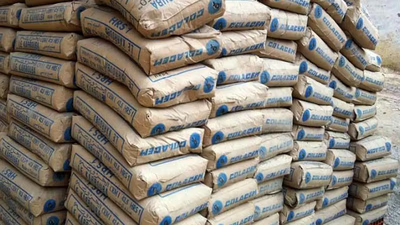
Loading cement for consumption and managing a cement warehouse involves receiving bulk or bagged cement from manufacturers and storing it for distribution. Bulk cement is transported in specialized vehicles, while bagged cement is packaged in standard bags. The loading process utilizes pneumatic or mechanical systems to transfer cement from storage to transportation vehicles. Warehouse design must prioritize storage capacity, accessibility, ventilation, and safety regulations. Efficient logistics planning is essential for optimizing delivery routes and minimizing costs. Orders can be received through various channels, and the loading process may involve conveyor belts or forklifts. Proper cleanliness of the warehouse environment is crucial to maintain quality during storage and loading. Cement can be provided in bulk or bagged forms, with specific labeling requirements for each type.
Inventory management ensures timely availability of cement by tracking shipments and implementing a first-in-first-out system. Quality control measures are necessary to meet standards and prevent contamination.
-
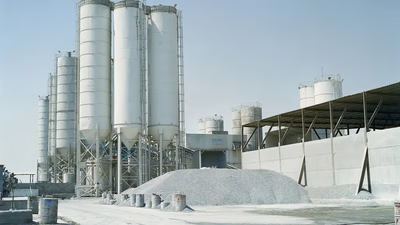
The Middle East, particularly the GCC countries, is a significant player in the global cement market, with India being the top destination for cement exports. In the first five months of this year alone, over 5. 8 million tons of cement valued at nearly $128 million were exported from the region. The demand for cement in the GCC nations stems from extensive construction and infrastructure projects. North African countries like Egypt and Algeria also import substantial amounts of cement due to their ongoing development needs. East African nations such as Kenya and Tanzania are similarly increasing their imports as urbanization accelerates. Challenges facing the industry include supply chain disruptions, increased production costs, and transportation issues exacerbated by the COVID-19 pandemic. Other notable importers include Iraq, Kuwait, and Afghanistan, which rank among the highest in terms of import value.
The UAE and Saudi Arabia are leading exporters within the region, bolstered by their robust cement industries. Oman is also expanding its production capacity to enhance export capabilities. Additionally, Turkey and Iran contribute significantly to regional exports due to their established cement sectors.
-
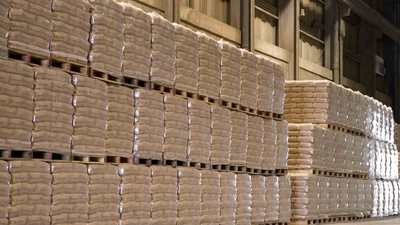
Cement is a crucial building material that binds sand particles, forming a solid structure essential in construction. It is produced by heating calcareous materials, clay, and silica at high temperatures, resulting in a durable product that hardens when mixed with water. The most common type is Ordinary Portland Cement (OPC), used for general construction. Variants like White Cement and Rapid Hardening Cement cater to specific needs, such as aesthetics and quick strength development. The production process involves extracting raw materials, crushing them into powder, and heating them in a kiln to create clinker, which is then ground into cement powder. Cement"s chemical reaction with water during hydration leads to hardening, providing strength to various structures including buildings, bridges, and roads. However, cement production has environmental impacts due to greenhouse gas emissions. Efforts are underway to mitigate these effects through alternative materials and energy-efficient technologies.
Understanding the properties and applications of cement is vital for stakeholders in the Middle East trade platform and B2B marketplace Asia. "
-
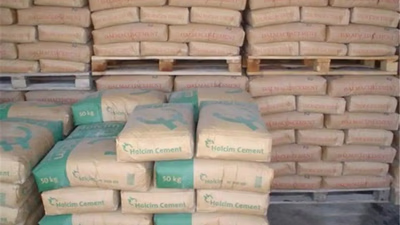
LafargeHolcim leads the global cement industry, operating in over 70 countries. Other major players include China"s CNBM and Anhui Conch Cement, both known for their extensive production capabilities and innovation. HeidelbergCement from Germany and Cemex from Mexico also rank among the top producers, emphasizing sustainability and customer-centric solutions. In 2019, China maintained its dominance with a production of 2200 million tons, followed by India at 320 million tons and Vietnam at 95 million tons. The United States ranked fourth with 89 million tons, while Egypt and Indonesia produced 76 million and 74 million tons respectively. Iran"s production increased to 60 million tons, elevating it to seventh place globally as Turkey"s output fell significantly. Other notable producers include Russia, Brazil, South Korea, and Japan. The cement market is characterized by a mix of established companies focusing on innovation and sustainability while navigating fluctuating production rates across different regions. "
-

Various types of cement serve distinct purposes in construction, each tailored to meet specific strength and durability requirements. Ordinary Portland Cement (OPC) is the most common, suitable for general construction like residential buildings and pavements. Portland Pozzolana Cement (PPC) enhances workability and durability, ideal for hydraulic structures and marine environments. Other types include rapid hardening cement for expedited projects, sulphate resistant cement for sulfate-rich environments, and blended cements that improve sustainability by incorporating industrial by-products. Each type of cement is formulated to address unique environmental conditions and project demands, ensuring optimal performance in diverse applications. The choice of cement affects workability, setting time, and overall structural integrity. As sustainability becomes a priority in construction, blended cements are gaining traction due to their reduced environmental impact.
-
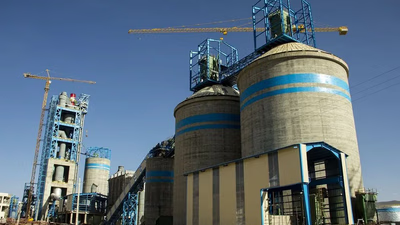
High-tech cement and clinker represent advanced materials in construction, offering enhanced performance, durability, and sustainability. Innovations include blended cements that incorporate supplementary cementitious materials (SCMs) like fly ash and slag to improve strength and reduce environmental impact. Low-carbon cements aim to lower CO2 emissions through alternative binders or modified formulations. High-tech clinker production focuses on reducing environmental effects by utilizing novel binders and integrating carbon capture technologies. These advancements are essential for achieving sustainable construction practices, balancing performance with economic viability. The industry is evolving towards producing innovative cement-based products such as lightweight and self-healing concrete, driven by technological progress. However, demographic changes and overcapacity in the cement sector may lead to a significant decline in demand for traditional cement by mid-century. As developing countries modernize their infrastructure, some cement plants may become obsolete or need to adapt their operations.









